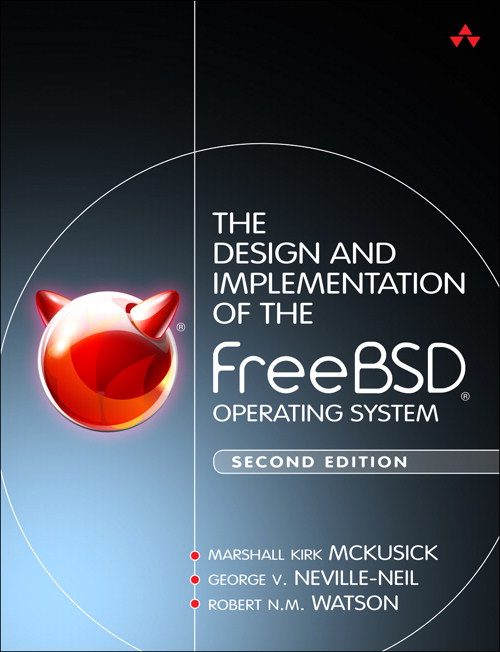
Now available: The Design and Implementation of the FreeBSD Operating System (Second Edition)
[ source navigation ] [ identifier search ] [ freetext search ] [ file search ] [ list types ] [ track identifier ]
FreeBSD/Linux Kernel Cross Reference
sys/Documentation/firmware_class/
Version:
- FREEBSD - FREEBSD-13-STABLE - FREEBSD-13-0 - FREEBSD-12-STABLE - FREEBSD-12-0 - FREEBSD-11-STABLE - FREEBSD-11-0 - FREEBSD-10-STABLE - FREEBSD-10-0 - FREEBSD-9-STABLE - FREEBSD-9-0 - FREEBSD-8-STABLE - FREEBSD-8-0 - FREEBSD-7-STABLE - FREEBSD-7-0 - FREEBSD-6-STABLE - FREEBSD-6-0 - FREEBSD-5-STABLE - FREEBSD-5-0 - FREEBSD-4-STABLE - FREEBSD-3-STABLE - FREEBSD22 - l41 - OPENBSD - linux-2.6 - MK84 - PLAN9 - xnu-8792
SearchContext: - none - 3 - 10
SearchContext: - none - 3 - 10
| Name | Size | Last modified (GMT) | Description | |
| Parent directory | 2013-02-02 13:13:18 | |||
| README | 4562 bytes | 2012-12-25 01:40:45 | ||
| firmware_sample_driver.c | 2781 bytes | 2007-07-05 23:08:24 | ||
| firmware_sample_firmware_class.c | 5210 bytes | 2008-01-26 22:43:18 | ||
| hotplug-script | 443 bytes | 2010-08-24 17:11:34 |
1 2 request_firmware() hotplug interface: 3 ------------------------------------ 4 Copyright (C) 2003 Manuel Estrada Sainz 5 6 Why: 7 --- 8 9 Today, the most extended way to use firmware in the Linux kernel is linking 10 it statically in a header file. Which has political and technical issues: 11 12 1) Some firmware is not legal to redistribute. 13 2) The firmware occupies memory permanently, even though it often is just 14 used once. 15 3) Some people, like the Debian crowd, don't consider some firmware free 16 enough and remove entire drivers (e.g.: keyspan). 17 18 High level behavior (mixed): 19 ============================ 20 21 1), kernel(driver): 22 - calls request_firmware(&fw_entry, $FIRMWARE, device) 23 - kernel searchs the fimware image with name $FIRMWARE directly 24 in the below search path of root filesystem: 25 User customized search path by module parameter 'path'[1] 26 "/lib/firmware/updates/" UTS_RELEASE, 27 "/lib/firmware/updates", 28 "/lib/firmware/" UTS_RELEASE, 29 "/lib/firmware" 30 - If found, goto 7), else goto 2) 31 32 [1], the 'path' is a string parameter which length should be less 33 than 256, user should pass 'firmware_class.path=$CUSTOMIZED_PATH' 34 if firmware_class is built in kernel(the general situation) 35 36 2), userspace: 37 - /sys/class/firmware/xxx/{loading,data} appear. 38 - hotplug gets called with a firmware identifier in $FIRMWARE 39 and the usual hotplug environment. 40 - hotplug: echo 1 > /sys/class/firmware/xxx/loading 41 42 3), kernel: Discard any previous partial load. 43 44 4), userspace: 45 - hotplug: cat appropriate_firmware_image > \ 46 /sys/class/firmware/xxx/data 47 48 5), kernel: grows a buffer in PAGE_SIZE increments to hold the image as it 49 comes in. 50 51 6), userspace: 52 - hotplug: echo 0 > /sys/class/firmware/xxx/loading 53 54 7), kernel: request_firmware() returns and the driver has the firmware 55 image in fw_entry->{data,size}. If something went wrong 56 request_firmware() returns non-zero and fw_entry is set to 57 NULL. 58 59 8), kernel(driver): Driver code calls release_firmware(fw_entry) releasing 60 the firmware image and any related resource. 61 62 High level behavior (driver code): 63 ================================== 64 65 if(request_firmware(&fw_entry, $FIRMWARE, device) == 0) 66 copy_fw_to_device(fw_entry->data, fw_entry->size); 67 release(fw_entry); 68 69 Sample/simple hotplug script: 70 ============================ 71 72 # Both $DEVPATH and $FIRMWARE are already provided in the environment. 73 74 HOTPLUG_FW_DIR=/usr/lib/hotplug/firmware/ 75 76 echo 1 > /sys/$DEVPATH/loading 77 cat $HOTPLUG_FW_DIR/$FIRMWARE > /sysfs/$DEVPATH/data 78 echo 0 > /sys/$DEVPATH/loading 79 80 Random notes: 81 ============ 82 83 - "echo -1 > /sys/class/firmware/xxx/loading" will cancel the load at 84 once and make request_firmware() return with error. 85 86 - firmware_data_read() and firmware_loading_show() are just provided 87 for testing and completeness, they are not called in normal use. 88 89 - There is also /sys/class/firmware/timeout which holds a timeout in 90 seconds for the whole load operation. 91 92 - request_firmware_nowait() is also provided for convenience in 93 user contexts to request firmware asynchronously, but can't be called 94 in atomic contexts. 95 96 97 about in-kernel persistence: 98 --------------------------- 99 Under some circumstances, as explained below, it would be interesting to keep 100 firmware images in non-swappable kernel memory or even in the kernel image 101 (probably within initramfs). 102 103 Note that this functionality has not been implemented. 104 105 - Why OPTIONAL in-kernel persistence may be a good idea sometimes: 106 107 - If the device that needs the firmware is needed to access the 108 filesystem. When upon some error the device has to be reset and the 109 firmware reloaded, it won't be possible to get it from userspace. 110 e.g.: 111 - A diskless client with a network card that needs firmware. 112 - The filesystem is stored in a disk behind an scsi device 113 that needs firmware. 114 - Replacing buggy DSDT/SSDT ACPI tables on boot. 115 Note: this would require the persistent objects to be included 116 within the kernel image, probably within initramfs. 117 118 And the same device can be needed to access the filesystem or not depending 119 on the setup, so I think that the choice on what firmware to make 120 persistent should be left to userspace. 121 122 about firmware cache: 123 -------------------- 124 After firmware cache mechanism is introduced during system sleep, 125 request_firmware can be called safely inside device's suspend and 126 resume callback, and callers need't cache the firmware by 127 themselves any more for dealing with firmware loss during system 128 resume.
[ source navigation ] [ identifier search ] [ freetext search ] [ file search ] [ list types ] [ track identifier ]